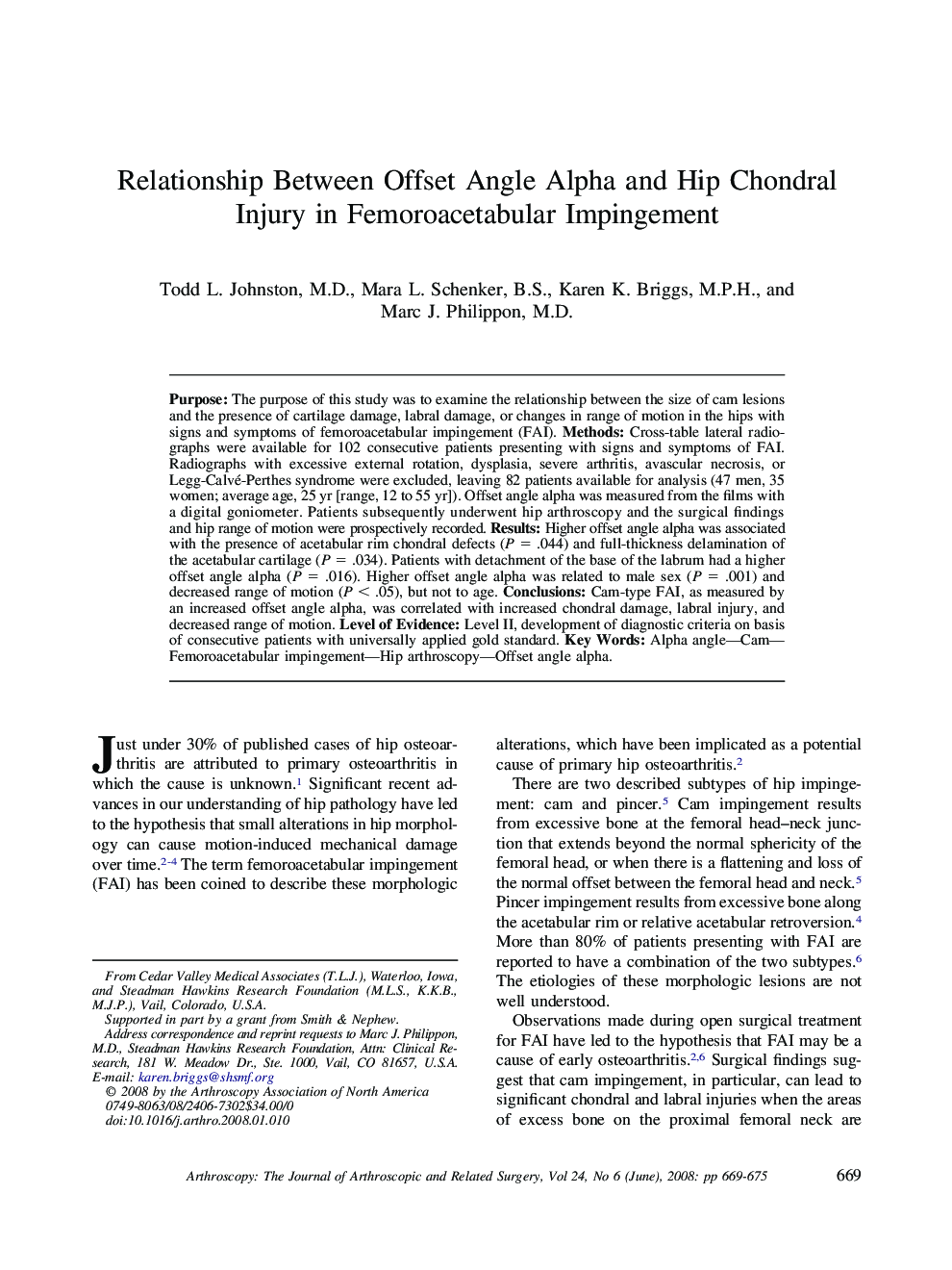| Article ID | Journal | Published Year | Pages | File Type |
|---|---|---|---|---|
| 4045018 | Arthroscopy: The Journal of Arthroscopic & Related Surgery | 2008 | 7 Pages |
Purpose: The purpose of this study was to examine the relationship between the size of cam lesions and the presence of cartilage damage, labral damage, or changes in range of motion in the hips with signs and symptoms of femoroacetabular impingement (FAI). Methods: Cross-table lateral radiographs were available for 102 consecutive patients presenting with signs and symptoms of FAI. Radiographs with excessive external rotation, dysplasia, severe arthritis, avascular necrosis, or Legg-Calvé-Perthes syndrome were excluded, leaving 82 patients available for analysis (47 men, 35 women; average age, 25 yr [range, 12 to 55 yr]). Offset angle alpha was measured from the films with a digital goniometer. Patients subsequently underwent hip arthroscopy and the surgical findings and hip range of motion were prospectively recorded. Results: Higher offset angle alpha was associated with the presence of acetabular rim chondral defects (P = .044) and full-thickness delamination of the acetabular cartilage (P = .034). Patients with detachment of the base of the labrum had a higher offset angle alpha (P = .016). Higher offset angle alpha was related to male sex (P = .001) and decreased range of motion (P < .05), but not to age. Conclusions: Cam-type FAI, as measured by an increased offset angle alpha, was correlated with increased chondral damage, labral injury, and decreased range of motion. Level of Evidence: Level II, development of diagnostic criteria on basis of consecutive patients with universally applied gold standard.
